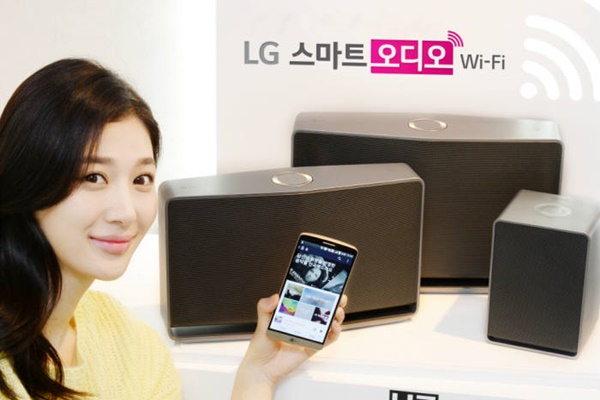Samsung Electronics and LG Electronics are preparing themselves to strengthen audio businesses in 2016. Unlike TVs, businesses that specializes in audios must have many experiences in technical levels to affect markets. Both businesses are planning to reorganize groups and change markets’ dynamics with competitive edge in IoT. They are doing so to secure profitable business after TV business slows down.
It is likely that executive director Chae Ju-rak will become the team leader of AV Business Team that was established during Samsung Electronics’ group reorganization. Executive director Chae is an in-house audio expert that had researched and developed audio products from Samsung Electronics’ Video Display (VD) Business Departments’ Development Team. He also led development and release of ‘Wireless 360 Audio’ that was released by Samsung Electronics this year.
LG Electronics is going to leave head position of Convergence AV (CAV) Business Department open for a while and have Kwon Bong-seok, who is the head of Home Entertainment (HE) Business Headquarters, be in charge of audio business. He is going to lead products with high growth rate such as wireless audio product called ‘Smart Audio’, sound bar, high-output audio called ‘X Boom’ and others and have audio business as the anchor of HE Department.

Samsung Electronics has established AV Business Team and bracing it as an exclusive audio business group after 10 years because necessities for diversification of VD Business Department’s profit structure had been brought up. Although it is still the unrivaled top TV business in the world, industries have been pointing out that its dependence on image products like TV and monitor is too high compared to LG Electronics, SONY, and Panasonic. It was the same during management diagnosis by Future Strategies Department.
Samsung Electronics put out home theater, MP3 Player and others while it was running ‘Digital Audio Business Team’ in the past. ‘MyMy’ and ‘Wingo’ are products that came out during this time to counter against SONY’s ‘Walkman’. However Digital Video Business Department and ‘Digital AV Business Department’, which is a formal body of current VD Business Department, were combined in 2006. After 2 years, MP3 and home theater were divided into Information Communication Department, which is a formal body of IT & Mobile (IM) Sector, and VD Business Department respectively.
In the meantime, industries have changed differently compared to Samsung Electronics’ predictions. As number of audio mania groups started to increase, size of markets rapidly increased also. LG Electronics, SONY, and Panasonic established independent audio groups while businesses such as Bose, Sennheiser and others that specialize in audios encroached into markets by expanding their businesses from home audio to portable audio. Only Samsung Electronics saw audio as TV accessories instead of separate product. Samsung Electronics is planning to turn around its strategies 180 degrees and develop and release Smart products using its competitive edge in information communication technology (ICT). It is also sending experts to ‘Samsung Audio Lab’, which put out ‘Wireless 360 Audio’ that was released this year, in California.

LG Electronics is planning to strengthen its competitive edge in audio business by focusing its capabilities into CAV Business Department. Experts believe that its technologies in Smart Audio are one-step ahead as it was the only South Korean business to work with Google for ‘Google Cast’ in March. It is planning to establish its own range of audio business by combining ICT to audio technical skills that it had learned from developing audios for the first time in South Korea during its Gold Star Corporation days in 1959.
Wireless audio markets that both businesses are focusing on are growing fast. According to market research company called IHS, there were 1.5 million wireless audios globally in 2010 and there will be 66 million of them in 2018 after growing 88% annually. Traditional audio businesses such as Bose, Harman and others are responding to markets by introducing related products one after the other.
Staff Reporter Seo, Hyeongseok | hsseo@etnews.com